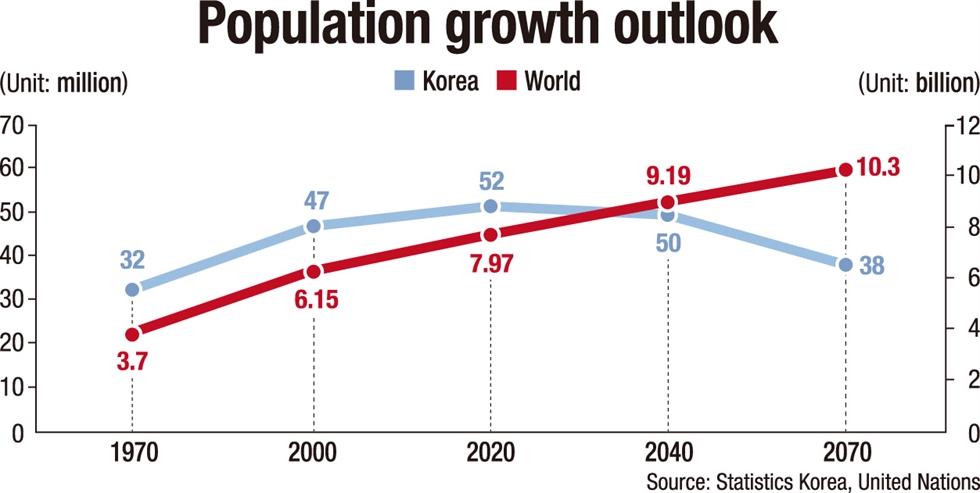South Korea population is expected to drop 27% by 2070, from 52 million to 38 million. This disturbing trend is fueled by younger generations delaying or forgoing marriage.
According to the South Korean Statistics Agency, there were 192,000 weddings in 2022, down from 295,000 in 1970. South Koreans are hesitant to marry and have children due to rising housing, child-rearing, and young unemployment costs.
One in three 25-49-year-old South Korean women and nearly half of males are single. These demographic trends contrast with the world population’s 28% growth from present to 2070. The population of South Korea is expected to shrink by 27%.
This article examines South Korea’s dropping birth rates and changing social norms that have delayed weddings and family planning.
The Marriage Problem in South Korea Population
The shifting priorities and circumstances of South Korea population have been lowering marriage rates. Only 192,000 weddings occurred in 2022, compared to 295,000 in 1970. From 1970 to 2022, the crude marriage rate fell from 5.5 to 3.7 per 1,000 people.
The average first marriage age for men and women is 33.7 and 31.3 years. 17.2% of married women 15-54 experienced career disruptions. The main causes of employment interruptions were childcare (42.7 percent), marriage (26.3 percent), and pregnancy and delivery (22.8 percent).
Fertility at Record Low
In 2022, South Korea’s total fertility rate dropped to a historic low of 0.78. This is a considerable reduction from 1.30 in 2012 and below the 2.10 replacement rate needed to maintain population levels.
Demographic trends impact South Korea’s labour, economy, and social welfare. The government must deal with an ageing population, a diminishing workforce, and rising senior care and assistance needs.
South Korea Population Decline: Current Data
Around 51.7 million people live in South Korea in 2021. This is down from 51.8 million in 2020. These tiny changes highlight South Korea’s worrisome population loss.
Reasons for Late Marriages and Low Birth Rates
South Korea population delayed marriages and low birth rates are caused by several factors:
- Economic Pressures: The high expense of housing, schooling, and childcare has stopped many young South Koreans from beginning kids.
- Career Concerns: Career-focused people put work before family. Long hours and employment uncertainty might also deter family planning.
- Gender Roles: South Korean society still values gender roles and family obligations. Many women struggle to balance work and family, therefore some choose careers.
- Demanding Lifestyles: South Koreans’ fast-paced metropolitan lifestyles leave little time for families. Finding a work-life balance for parenting is difficult.
- Youth Unemployment: High youth unemployment, especially among college graduates, discourages young couples from marrying and having children.
- Changing Attitudes: More South Koreans are rejecting conventional marriage and family values. Personal growth, travel, and freedom may trump early marriage.
- Social Pressures: Marriage and parenthood expectations and judgements can increase stress and deter people from seeking them.
Government Interventions
The South Korean government recognises the importance of demographic issues. Several programmes and activities promote family formation and birth rates:
- Financial Support: Multi-child households receive monetary awards and tax perks.
- Parental Leave: New parents benefit from work stability and economic assistance from improved parental leave regulations.
- Affordable and high-quality childcare services are needed to help working parents.
- Housing: Affordable housing programmes help young couples with housing issues.
- Education: Awareness and education programmes support family life and encourage marriage and motherhood.
Conclusion
Slowing birth rates and delayed marriages pose difficult issues for South Korea population future. Economic demands, job worries, changing gender roles, and changing cultural attitudes contribute to these trends, but the government’s proactive support for families and family planning can reverse the population decrease.
Demographic changes in South Korea highlight the need for a comprehensive strategy that addresses economic, social, cultural, and attitudinal trends that affect marriage and family decisions. South Korea’s demographic stability depends on balancing work and life and minimising young couples’ financial pressures.


